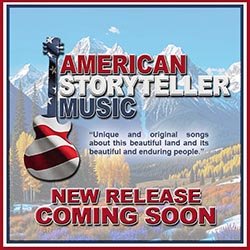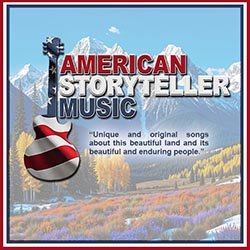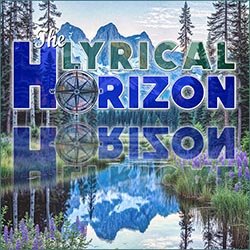|
|
|

Minnesota: The Land of 10,000 Lakes
The name "Minnesota" comes from Dakota Indian words meaning "sky-tinted waters" or "sky-blue waters." Minnesota is renowned for its lakes, outdoor adventures, and vibrant Twin Cities culture.
Top 15 Most Interesting Facts About Minnesota
- State Motto: "L'étoile du Nord" (The Star of the North).
- State Bird: Common Loon.
- State Flower: Pink and White Lady's Slipper.
- Minnesota is called the "Land of 10,000 Lakes," but it actually has over 11,000 lakes.
- The Mall of America in Bloomington is the largest shopping mall in the U.S.
- Minnesota is the birthplace of legendary musician Prince.
- The Mississippi River begins its journey at Lake Itasca in northern Minnesota.
- Minneapolis and St. Paul are known as the Twin Cities due to their close proximity and shared metro area.
- Minnesota is one of the coldest states in the U.S., with temperatures often dropping below zero in winter.
- The state has the highest voter turnout rate in the country.
- Boundary Waters Canoe Area Wilderness is one of the most pristine wilderness areas in the U.S.
- Spam, the canned meat, was invented in Austin, Minnesota, home of the Spam Museum.
- The Guthrie Theater in Minneapolis is one of the most renowned regional theaters in the nation.
- Minnesota's state fair is one of the largest in the U.S., attracting over 2 million visitors annually.
- Lake Superior, which borders Minnesota, is the largest freshwater lake in the world by surface area.
Geography and Climate of Minnesota
Known for its water-rich landscape, Minnesota features forests, plains, and rivers. Key features include:
- Highest Point: Eagle Mountain (2,301 feet).
- Lowest Point: Lake Superior (602 feet).
- Major Rivers: Mississippi River, Minnesota River, and St. Croix River.
Twin Cities average temperatures: High – Low
- January: 24°F / 7°F (-4.4°C / -13.9°C)
- May: 70°F / 48°F (21.1°C / 8.9°C)
- August: 80°F / 61°F (26.7°C / 16.1°C)
- October: 59°F / 39°F (15°C / -16.1°C)
Average annual snowfall: 36-70 inches (91-178 cm)
Normal annual precipitation: 18-32 inches (46-81 cm)
Temperatures are usually slightly warmer south of the Twin Cities, and cooler in northern parts of the state.
Minnesota Waters
Minnesota's lakes and rivers are part of what this state is all about. One of Minnesota's nicknames is "Land of 10,000 Lakes," but it really has lots more. It's on the shore of the biggest of the Great Lakes, Lake Superior. And, it's where the world's third-largest river, the Mississippi, begins.
Here are some facts about Minnesota's waters:
- Number of lakes: 11,842 (over 10 acres)
- Rivers and streams add up to 69,200 miles
- Mississippi River: 680 miles of its 2,552 total miles flow through Minnesota.
- Lake Superior is the world's largest freshwater lake. It's at the end of the St. Lawrence Seaway, which brings boats from around the world to the port of Duluth, Minn.
- Minnesota's rivers and streams flow in three directions: north to Hudson Bay in Canada, east to the Atlantic Ocean, and south to the Gulf of Mexico.
A Brief History of Minnesota
Minnesota has a long history of exploration and settlement:
The land that is now Minnesota was first inhabited by Paleo-Indian peoples thousands of years ago. By the time of European arrival, the region was home to several prominent Native American tribes, primarily the Dakota (also known as the Sioux), with the Anishinaabe (Ojibwe or Chippewa) migrating into the area in the 17th and 18th centuries.
French explorers, missionaries, and fur traders were the first Europeans to arrive in the 17th century, seeking to map the area and establish trade with the native populations. The fur trade became the dominant economic activity for nearly two centuries, shaping the early interactions between Europeans and Native Americans. Following the Revolutionary War, the land east of the Mississippi River became part of the United States' Northwest Territory, with the land to the west being acquired in the 1803 Louisiana Purchase.
The establishment of Fort Snelling at the confluence of the Minnesota and Mississippi rivers in the 1820s marked the first major American settlement and military presence. This outpost facilitated a series of treaties with the Dakota and Ojibwe, which ceded vast tracts of land and opened the region to American settlers. Minnesota was organized as a U.S. territory in 1849 and, due to its rapid population growth, was admitted to the Union as the 32nd state on May 11, 1858.
Early statehood was marked by the tragic U.S.-Dakota War of 1862, which resulted in the forced removal of the Dakota from their native lands. In the late 19th and early 20th centuries, Minnesota's economy boomed, driven by its abundant natural resources. Flour milling in Minneapolis, powered by St. Anthony Falls, made the city the "Flour Milling Capital of the World." The vast white pine forests fueled a massive lumber industry, and the discovery of rich iron ore on the Mesabi, Vermilion, and Cuyuna Ranges made Minnesota the nation's leading producer of iron. This industrial growth attracted waves of European immigrants, particularly from Germany, Sweden, and Norway, who heavily influenced the state's cultural and political identity. Today, Minnesota is known for its diverse economy, strong civic traditions, and deep connection to its natural landscape.
Famous Minnesotans
- Ann Bancroft, explorer: first woman to cross the ice to both the North Pole (1986 by dogsled) and South Pole (1993 by skis)
- Bob Dylan, singer/songwriter: Rock & Roll Hall of Fame; Grammy, Oscar and Nobel Prize winner
- Louise Erdrich, author: numerous novels, poetry, short stories and more
- Judy Garland, actress/singer: played Dorothy in the movie "The Wizard of Oz"
- Hubert H. Humphrey, U.S. Senator, 1949-64 and 1971-78; U.S. Vice President, 1965-69
- Garrison Keillor, author/humorist/radio personality: host of "A Prairie Home Companion"
- Charles A. Lindbergh Jr., first person to fly alone over the Atlantic Ocean, 1927
- Walter F. Mondale, U.S. Senator, 1964-76; U.S. Vice President, 1977-81
- Karen Nyberg, astronaut: 2008 space shuttle flight
- Prince (Rogers Nelson), singer/songwriter/actor: Grammy Award winner, Oscar for Best Soundtrack; known for his movie "Purple Rain"
- Charles Schulz, cartoonist: created Peanuts series
- Lindsey Vonn, only American woman to win gold in downhill skiing (2010)
- Laura Ingalls Wilder, author: "Little House on the Prairie" series of children's books
- Roy Wilkins, civil rights leader: director of the NAACP, 1955-1977
Economy
Tourism: $16 billion industry in Minnesota
2020 Tourism and the Economy Fact Sheet, featuring 2018 state sales tax and jobs data
Other major industries: healthcare and medical equipment, high technology, finance and insurance, forest products, printing and publishing, food products, iron ore mining
Minnesota businesses: Minnesota is home to some of the biggest companies in the U.S., including Target, Best Buy, 3M, General Mills, Medtronic, Hormel Foods, Ameriprise Financial, Ecolab and St. Jude Medical.
Agriculture: Top crops include corn, soybeans, sugar beets, wheat. Major livestock includes hogs, dairy cows, beef cattle, turkeys.
Top 10 Things to Do in Minnesota
- Explore the Mall of America in Bloomington.
- Visit the Boundary Waters Canoe Area Wilderness for camping and canoeing.
- Tour Prince's Paisley Park in Chanhassen.
- Walk along the Mississippi River in Minneapolis.
- Experience the Minnesota State Fair in St. Paul.
- Take a scenic drive along the North Shore of Lake Superior.
- Visit Itasca State Park and walk across the Mississippi headwaters.
- Explore the Walker Art Center and Minneapolis Sculpture Garden.
- Enjoy winter sports like ice fishing and snowmobiling in the north.
- Relax in Duluth and enjoy the Lake Superior harbor views.
Top 10 Destinations in Minnesota
Based on visitor numbers and iconic status, here are ten of the top destinations in Minnesota:
-
Mall of America: Located in Bloomington, this is the largest shopping and entertainment complex in the United States and the state's most visited attraction. It features hundreds of stores, an indoor theme park (Nickelodeon Universe), the Sea Life Minnesota Aquarium, and countless dining options.
-
The North Shore Scenic Drive: This breathtaking route along the shoreline of Lake Superior stretches from Duluth to the Canadian border. It offers access to numerous state parks, including the spectacular waterfalls at Gooseberry Falls State Park and the iconic clifftop views of Split Rock Lighthouse.
-
Boundary Waters Canoe Area Wilderness (BWCAW): A pristine wilderness area within the Superior National Forest, the BWCAW is a world-renowned destination for canoeing, kayaking, and fishing. Its network of over a thousand lakes and streams offers unparalleled solitude and natural beauty.
-
Voyageurs National Park: Adjoining the BWCAW, this is a water-based national park preserving the historic routes of the French-Canadian fur traders. Visitors explore the park's large lakes and rugged islands primarily by boat, enjoying camping, fishing, and searching for wildlife.
-
Itasca State Park: As Minnesota's oldest state park, Itasca protects the official headwaters of the Mississippi River. The most popular activity is walking across the shallow stream as it begins its long journey to the Gulf of Mexico.
-
Minneapolis Sculpture Garden & Walker Art Center: This is one of the country's largest urban sculpture parks, famous for its iconic "Spoonbridge and Cherry" sculpture. Paired with the adjacent and internationally recognized Walker Art Center, it's a premier destination for contemporary and modern art.
-
Minnehaha Regional Park: A beloved urban park in Minneapolis that is home to the picturesque 53-foot Minnehaha Falls. Trails follow the creek down to the Mississippi River, offering a beautiful natural escape within the city.
-
Canal Park, Duluth: A vibrant tourist district on the shore of Lake Superior. Visitors flock to watch massive 1,000-foot ships pass under the city's signature Aerial Lift Bridge, skip stones into the lake, and explore the area's unique shops and restaurants.
-
Pipestone National Monument: A sacred site for many Native American tribes, this monument in southwestern Minnesota protects the quarries of red pipestone used for centuries to carve ceremonial pipes. Visitors can watch live carving demonstrations and walk the scenic Circle Trail.
-
Historic Fort Snelling and State Park: Located at the confluence of the Minnesota and Mississippi Rivers, this site offers both natural beauty and deep historical significance. Visitors can explore the trails of the state park and then step back in time at the adjacent historic fort to learn about its military, Native American, and cultural history.
Plan Your Visit
For more information about Minnesota, visit the state's official tourism site: Explore Minnesota
Music and Products Associated with The State of Minnesota
The Following album covers link to each song's specific page for this state. All lyrics have been written by Mark S. McKenzie/American Storyteller Music and The Lyrical Horizon and produced by Story Teller Books and Music or Loud Mouth Books and Music, Copyright 2025, All Rights Reserved:







|
|







